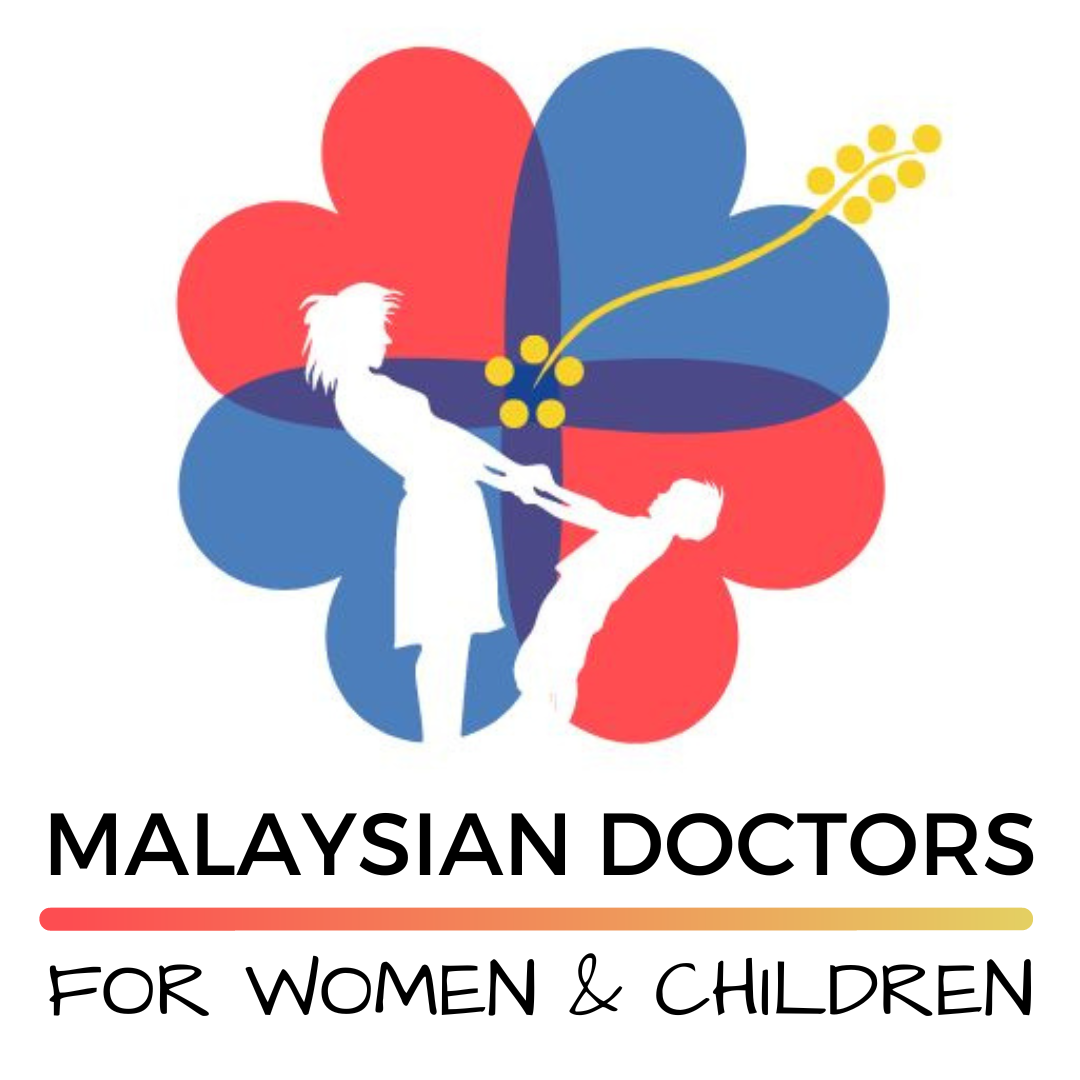The webinar on “An Overview on Female Genital Mutilation in Africa”, organised in collaboration with Reproductive Rights Advocacy, Alliance Malaysia (RRAAM) was held on, Saturday, 5th June 2021 at 1000 BST/ 1700 MYT.
Special thank you to Professor Yufu Iguchi, of College of Asia Pacific Studies, Ritsumeikan Asia Pacific University, Japan, Dr. Kaori Miyachi, a researcher at Saga University, Japan, and Professor Makiko Toda of the Faculty of Contemporary Society, Kyoto Women’s University, Japan for your wonderful insights on the topic.
Summary by Dr Syed Hadi Arief

Introduction of the Concepts and Speakers by Professor Iguchi, College of Asia Pacific Studies, Ritsumeikan Asia Pacific University
Professor Iguchi started the webinar by going through the purpose of the webinar. She hopes that the content today offers important information about the practice and actions taken in Africa, helps us to situate the issue in Malaysia in a broader context, and create international networks crossing disciplines.
Demography
FGM/C is practiced in Africa, Middle East, South Asia, and South East Asia.
Categorisation of Female Genital Mutilation/ Cutting (FGM/C) by WHO
- Type 1: Partial/ total clitoridectomy
- Type 2: Partial/ total removal of clitoris and labia minora +/- removal of labia majora
- Type 3: Infibulation (narrowing the vaginal opening by cutting and repositioning the clitoris and labia)
- Type 4: All other procedures to the female genitalia including pricking, piercing, cutting, scraping, or burning.
The politics of labelling
The very decision to write [or not] about the topic has become a political statement, and so is one’s choice of tone and terminology.
– Shell-Duncan and Hernland
There are many terms to label this act. In the early 1980s, anthropologists have chosen female circumcision as the translated word from the local language, as a way to respect the local culture. Female genital cutting (FGC), operation, alteration, and surgery are preferred terms because the term mutilation carries the connotation to cause imperfection by removing or damaging the female genitalia. Many parents in these communities who chose to perform the practice on their girls love their children and see this practice as spiritual- and body-enhancing practices.
In the 1990s, international organisations and NGOs started to use female genital mutilation (FGM) to avoid the euphemistic expression and to stop the practice.
Comparisons between African and Malaysian practice
Both countries have a long history of stopping FGM/C since colonial periods. There have been ongoing debates between universalist camps that see the act of FGM/C as a violation of human rights versus protection of tradition. International organisations, governments, NGOs, and others have been involved in an attempt to abolish this practice.
She alluded that the next two presenters will explore the diversity of the practice in African countries. There is diversity in types, reasons, religions, the season of the practice, rituals, and rites of passage.

FGM/C: SDGs and Zero Tolerance vs. Patriarchal Mindset in Africa by Professor Makiko Toda, Kyoto Women’s University, Japan
International communities consider that FGM/C has serious adverse physical, mental, and sexual health. FGM/C violates fundamental universal human rights.
In September 2015, the 2030 Agenda for Sustainable Development and the subsequent Sustainable Development Goals (SDGs) were officially adopted by all 193 United Nations Member States. In SDG 5: Achieve gender equality and empower all women and girls. Targets 5.3; Eliminate all harmful practices, such as child, early and forced marriage, and female genital mutilation (FGM).
Despite zero-tolerance policy by their government and pressure from international committee, FGM/C continue to be prevalent in many ethnic groups in Kenya.
However, there is positive news (The New Humanitarian 2018):
East Africa has seen the biggest drop, from 71% in 1995 to 8% in 2016.
In North Africa, prevalence fell from nearly 60% in 1990 to 14% in 2015, and in West Africa rates dropped from 74% in 1996 to about 25% in 2017. Efforts from local NGOs and the international community have paid their dividend but there are still improvements to be made.
Anti FGM/C strategy in Kenya
In 1982, President Moi issued a presidential decree to abolish the practice. The Children Act of 2001 abolishes FGM/C and other harmful practices that negatively affect children under the age of 18 years old.
The constitution of Kenya 2010 guarantees that women and children of Kenya a right to dignity and physical integrity including freedom from violence, and the right to health, and the right not to be compelled to undergo any harmful cultural practices.
In 2011, the Prohibition of Female Genital Mutilation Act prohibits FGM/C to be performed on women of any age. This act also has punished medicalisation of FGM/C carried out by doctors, midwives, nurses, medical students, and so on.
According to the 2014 Kenya Demographic and Health Survey report, the prevalence rate of Kenya of FGM/C in Kenya is 21%, however the Somali ethnicity showed the highest prevalence of almost 94%. Most Somalis are Muslim and they are traditionally part of nomadic pastoral society.
The diversity of Africa
In Africa, there are 54 countries or 55 countries if you include the Western Sahara Sahrawi Arab Democratic Republic. The ethnic group number is in the thousands. Professor Toda’s research is focused on the Somali people. The Somali people are mainly Muslims and most of them hold onto the Shafi’i Islamic school of thought. Somali girls are normally excised between the age of six to nine.
Samburu ethnicity has the second-highest prevalence of FGM/C based on the 2014 Kenya Demographic and Health Survey. In the Samburu community, the girls are excised before their marriage around the age of 15 to 18. Samburu girls traditionally undergo FGM/C type 2, but recently milder cutting styles are chosen by many girls.
Somali girls traditionally undergo FGM/C type 3 (infibulation), which involves stitching to hold the two sides of the labia majora together. Recently types 1 and 2 FGM/C have been more prevalent. The main issues with FGM/C especially in these young Somali girls are they lack the capacity to weigh the decision. They do not understand the risk of FGM/C or are compelled to undergo this physical modification.
When interviewing a former FGM/C practitioner (Órla Ryan, 2019),
“I am the one who used to cut the girls … Sometimes I would cut the wrong part of the vagina and the girls would bleed terribly. But because I was poor and I was getting an income for my family, I could not stop.”
– Suli Gedi Jelle, a former circumciser
In an interview in 2011, medical staffs and the public were aware of the complications of FGM/C such as excessive bleeding, infection (including HIV/AIDS), mental trauma, retained menstruation, excruciating pain which can refrain from attending school and work, delay in delivery of baby, yet the regression of FGM/C is still rather slow. There are two main reasons for the ongoing practice of FGM/C in the Somali community:
A) Patriarchal value: FGM/C is considered as proof of virginity. Men have refused to marry women who are not excised.
Traditionally girls are expected to marry at around 14, of course, these are forced marriages arranged by their fathers. The girl’s virginity will help to determine the bride price (to be paid to the bride’s family) which is another patriarchal value. The bride price is very important for the father in poverty. As such, FGM/C is a prerequisite for marriage. Therefore, FGM/C is a tool to control women in a patriarchal society.
As part of the 2014 Kenya Demographic and Health Survey, which interviewed Somali women and men age 15-49 years old, 82.7% of Somali women and 87.0% of Somali men believed that FGM/C was required by their community. However, there was a minority who insisted that FGM/C is a tool to reinforce the idea that wives are their husbands’ property which is another component of patriarchal value.
B) Religious beliefs: Some educated Somalis told Professor Toda that FGM/C has nothing to do with Islam, but most Somalis who live in remote areas still believe that FGM/C is required by their religion. This is supported by the 2014 Kenya Demographic and Health Survey finding that 82.3% of Somali women and 83.4% of Somali men believed that FGM/C is required by their religion. The Somali people mainly adhere to the Shafi’i school of Islam that was historically introduced through its connection with Yemen’s Islamic education centre (Abdullahi 2017).
The efforts of local people to abolish FGM/C
A local NGO founded by local Somali women had persuaded local religious leaders not to accept Type 3 FGM/C and to abolish FGM/C for more than 10 years. FGM/C prevalence among Somalis in Garissa had dropped to 62.5%, partly because of the high awareness of the anti-FGM/C law (Yasmin et al. 2021). Secondly, what this NGO has achieved is the change of type of FGM/C among girls below the age of 14. The 2014 Kenya Demographic and Health Survey found that 87.9% of girls of Somali descent had types 1 and 2 FGM/C, whilst 11.3% percent had type 3 FGM/C. Nonetheless, even type 1 FGM/C is a traumatic experience for children, with potential subsequent complications.
Why the anti-FGM/C law could not abolish FGM/C completely?
Although Kenya outlawed FGM/C in 2011, and take the Zero Tolerance Policy, Somali people continue the practice. The issue seems to stem from the mindset of the local people. Despite the presidential decree and local and international NGO involvement, most Somali people still believe that FGM/C should be continued. Based on the 2014 Kenya Demographic and Health Survey, 81.2% of Somali women and 79.8% of Somali men think this practice should be continued. In order to influence the mindset, the local religious leaders had been approached to re-examine their stand on FGM/C. Muslim religious leaders and scholars are aware of the risk and medical harm of Type 3 FGM/C (infibulation) and have taken a stronger stand against it. However, they have not yet reached a firm decision against all types of FGM/C. Some leaders allow less severe cuttings of the clitoris or prickling to draw blood to continue in practice (UNFPA 2010).
In fact, the law has its negative effects as well. Pregnant women or women with gynaecological health needs who had undergone FGM/C when they were little will choose not to attend government hospitals due to fear that they will be identified and the trouble this might cause to themselves and their families. As a result, they will go to unregulated health providers or delay in getting medical attention (Kimani, S., Kabiru, C.W., Muteshi, J. et al. 2020).
Another approach that has been trialled is the positive deviance approach. This was based on a case study in the abandonment of FGM/C in Egypt between 1998 and 2000. At the time, 97% of all Egyptian women were cut. The local NGO identified the 3% as the positive deviants and they were pushed as role models to the locals. Their families and husbands are also recognised as positive deviants. Within the Somali community, 10% of women could be identified as positive deviants.
“This approach also showed that positive role models for FGC abandonment already existed within communities, and that these role models could take on important positions as advocates and strategists to end FGC.”
– Masterson and Swanson (2000)

Medicalisation of female circumcision in Kenya by Dr Kaori Miyachi, Saga University Japan.
Dr Kaori’s research work is focused on the Gusii people, another ethnic group in Kisii, Kenya. However, in contrast to Somali people, Gusii people are mainly Christians. This highlights the diversity of FGM/C practices in Kenya. Gusii people have the second-highest prevalence of FGM/C in Kenya. Dr Kaori highlighted the difference in prevalence and practice of FGM between the different ethnic groups; for example, the people of Luo have a very low prevalence of both FGM/C or male circumcision despite them being in close relation geographically. As such, circumcision is seen as part of the identity of the Gusii people, and tribalism in this part of the world is still a major concern.
The people of Gusii see circumcision as a way to progress in life.
- Female: Infant (ekengwerere) 🡪 uncircumcised girl (egesagaane) 🡪 circumcised girl (omoiseke) 🡪 married woman (omousbaati) 🡪 female elder (omongina)
- Male: infant (ekengwerere) 🡪 uncircumcised boy (omoisia) 🡪 circumcised boy (omomura) 🡪 male elder (omogaaka)
It follows that a young girl who is not circumcised will be teased at school the same way a young lady might be frowned upon if she is not married. During Dr Kaori’s interview with Gusii people on the reason for female circumcision (FC), they identified FC as a rite of passage, the progression of life stages, identity as Gusii people, controlling libido, a prerequisite for marriage, peer pressure, and a reason to celebrate a coming of age.
For the children after the circumcision, they will have a 7 days seclusion period where they get to rest and heal their bodies. At the end of the 7 days, they will receive presents from their family similar to that of Christmas Day. As for the parents and grandparents, they are happy when their grandchildren have circumcisions and progress in their life stages. Unlike Somali people, FGM/C practice is more medicalised and it is performed at clinics and even hospitals. The nurses will use anaesthesia, surgically sterilised, or disposable surgical knives. They performed clitoridectomy or pricking and very rarely any infibulation. The nurses who perform the procedure are doing it as they are devout Christians as opposed to economical reasons.
Dr Kaori’s research was done prior to the Prohibition of Female Genital Mutilation Act which was passed on 30th September 2011. “A person who commits an offense under this Act is liable, on conviction, to imprisonment for a term of not less than three years or to fine of not less than two hundred thousand shillings, or both.”. This leads to the establishment of local Christian and Women NGOs which campaigned for the abolishment of FGM/C.
Despite all this, in 2014 it is reported that prevalence is still high (99%) amongst Gusii people. Although the teachers or health care professionals facilitate the circulation of anti-circumcision education, their daughters are still circumcised. The anti-FGM law is also seen as belittling tradition and disrespecting the girls’ parents. In 2018 and 2019, there is a report that there are no more operations in Gusii, especially in the urban area. This is likely the result of the government enforcement which has seen multiple news coverage on nurses being arrested. Children at school watch DVDs and learn in their textbooks in school about the negative effects of FGM/C. Students are being encouraged to report their parents or teachers to the chief or police, and then the parents and the circumciser will be arrested.
Even if the mother did not want their daughter to be circumcised, their grandmother might still insist that their granddaughter be circumcised. This often leads to arguments between the grandmother and the mother. Another major difference between Somali people and Gusii people, the fathers are not involved in this decision. Some interviewees mentioned that ‘as a father, he does not discuss this matter with the wife. That this is a woman issue.
Conclusion
It is important to understand the context behind the different types of practices of FGM/C in different societies and communities, in order to stop FGM/C. What happens in Africa, and in this case, Kenya, is different from why and how FGM/C is done in Malaysia, and therefore NGOs should engage with researchers of FGM/C practices in Malaysia for a more effective and sensitive approach to ending the practice in Malaysia.

One thought to “Webinar summary: “An Overview on Female Genital Mutilation in Africa””
Pingback: Webinar Summary: “Examining FGM/C: Medical Gaze, Sexual Oppression, and the Ethics of Female Genital Cosmetic Surgery” – Malaysian Doctors for Women and Children